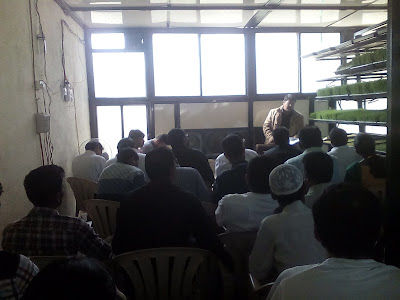 |
| Ashwin Ramesh Sawant Giving Training on Hydroponic Fodder System in Junnar Goat Farm Dist. Pune |
To make your garden more productive, allocate space based on what grows best in your area instead of simply choosing your most favorite crops. Although you may love beets, if tomatoes grow better in your climate then give them more room in your garden and make your beet plantings smaller. Ask your neighbors or take a look around your area to see what grows best in your region.
Make sure to pick the right seeds for your location and zone. Certain crops grow better in certain locations. Seed packets usually have information regarding USDA zones. Information regarding USDA Plant Hardiness Zones is also available online. A good example of this is growing oranges in warmer climates and apples in cooler climates.
Plant self-seeding flowers. Let your flowers do the work of re-stocking the garden for you. If you allow your flowers to go to seed, the following year you will have new seedlings popping up everywhere. If things get too crowded, or if plants appear in the wrong place, simply thin them out. Good self-seeders are alyssum, bellflower, forget-me-not, poppy and columbine.
If the grass under your tree is turning brown, consider thinning out your tree. Grass needs plenty of sunshine, and chances are, your tree might be blocking out too much sunlight from the grass. If you trim back and thin out some branches your grass will get a little more sunshine.
Secrets aren't really well-kept in the world of organic gardening, so you can't really call them secrets at all. What you're looking for is thorough and accurate information like what you've just read in the article above. If you can find this, you can become a successful organic gardener. Make sure you use this information.
Diy Hydroponics Systems Builder Guide Pdf
Diy Hydroponics Systems Cannabis
Diy Pvc Hydroponic Garden
Diy Pvc Hydroponic Plans
Do-It-Yourself Hydroponic Fodder Systems

No comments:
Post a Comment